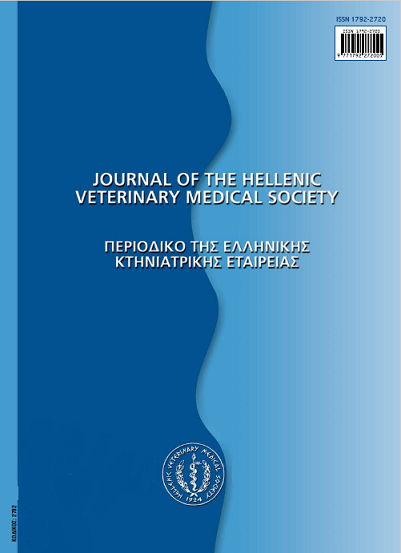The effect of prolonged decalcification on the immunohistochemical staining of Leishmania infantum amastigotes in formalin-fixed, paraffin-embedded canine soft tissues (lymph nodes)

Abstract
The aim of this report was to present the preliminary results of the effect of prolonged decalcification on the immunohistochemical staining of Leishmania infantum in formalin-fixed, paraffin-embedded canine soft tissues. A heavily parasitized by Leishmania infantum amastigotes popliteal lymph node was used in this study. One half of a surgically excised lymphnode was processed according to a decalcification protocol (for 40 days), while the other half was processed without decalcification. Immunohistochemical staining for Leishmania infantum was then applied on both decalcified and non-decalcified lymph node sections. The amastigotes were stained and detected in non-decalcified sections, whereas a significant reduction of immunostaining
was observed in decalcified sections. It is likely that parasite antigens are altered by the decalcification procedure, probably as a result of the long lasting effect of decalcifying acids on both the amastigotes and the host cell cytoplasm. Consequently, it seems that immunohistochemical detection of Leishmania infantum amastigotes is significantly affected following prolonged tissue decalcification.
Article Details
- How to Cite
-
PAPADOGIANNAKIS, E., KOUTINAS, A., & KONTOS, V. (2018). The effect of prolonged decalcification on the immunohistochemical staining of Leishmania infantum amastigotes in formalin-fixed, paraffin-embedded canine soft tissues (lymph nodes). Journal of the Hellenic Veterinary Medical Society, 59(1), 77–80. https://doi.org/10.12681/jhvms.14951
- Issue
- Vol. 59 No. 1 (2008)
- Section
- Short Communication

This work is licensed under a Creative Commons Attribution-NonCommercial 4.0 International License.
Authors who publish with this journal agree to the following terms:
· Authors retain copyright and grant the journal right of first publication with the work simultaneously licensed under a Creative Commons Attribution Non-Commercial License that allows others to share the work with an acknowledgement of the work's authorship and initial publication in this journal.
· Authors are able to enter into separate, additional contractual arrangements for the non-exclusive distribution of the journal's published version of the work (e.g. post it to an institutional repository or publish it in a book), with an acknowledgement of its initial publication in this journal.
· Authors are permitted and encouraged to post their work online (preferably in institutional repositories or on their website) prior to and during the submission process, as it can lead to productive exchanges, as well as earlier and greater citation of published work.



